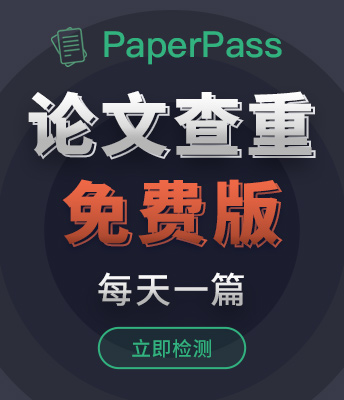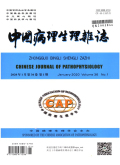- 钛学术文献服务平台 \
- 学术期刊 \
- 医药卫生期刊 \
- 基础医学期刊 \
- 中国病理生理杂志期刊 \
null
Immune mechanisms and immuno-therapy in sepsis: where do we stan d?
基本信息来源于合作网站,原文需代理用户跳转至来源网站获取
摘要:
Sepsis and septic shock have continued to produce significant morbidity and mortality, in recent times, in acutely injured patients as well as patients in the intensive care units despite advances in antibiotic therapy and in the cardi ovascular and pulmonary support for these patients. This emphasizes the need to gain a better understanding of the fundamental mechanisms of the pathogenesis of sepsis syndrome in the critically ill or injured patients. The present knowled ge of the mechanisms of septic pathogenesis clearly indicates involvement of mod ulations in the functions of the cells of body's immune defense system, namely, monocytes/macrophages, polymorphonuclear leukocytes, and lymphocytes. Most of su ch knowledge has been derived from laboratory experiments in animal models of se ptic injury, or from studies of immune-system cells, in vitro. Clinical stud ies have also supported the role of immune perturbations. Yet, to date, very few the rapeutic approaches are available to effectively counter the sepsis-related immu ne disturbances.
Functional modulations in the immune system cells, in the injured/septic hos ts, can exert not only adaptive/beneficial effects but also profoundly adverse effects on the non-immune-system cells such as endothelial, epithelial, neurona l, endocrine, neuro-endocrine, smooth muscle, skeletal muscle, and cardiac muscl e cells. The primary functional modulation in the immune-system cells after inju ry or with critical illness is activation of such cells via molecules from pat hogens, for example, lipopolysaccharide from gram negative organisms, lipoteic hoic acid/peptidoglycan from gram positive organisms, or zymosan from fungi. Suc h pathogenic molecules activate monocytes and tissue macrophages to result in th e expression and release of cytokine mediators (TNFα, IL-1, IL-6, IL-8, and IL- 10), as well as certain lipid mediators (PGE2, LTB4, PAF). While these media tors could play a host-defense role in support of the host via containment/destr uctio n of the pathogens, they could also exert detrimental effects in the host and co ntribute to host morbidity and mortality. Some of these mediators (TNFα, IL-1, IL-6, IL-8, LTB4, PAF) have been shown to be “pro-inflammatory”,and to potenti al ly exert a harmful effect on non-immune cell systems such as endothelial cells, epithelial cells, and muscle cells. Among the pro-inflammatory mediators, TNFα a nd IL-1 could play major harmful roles, and thus contribute to the injured host morbidity and mortality. Mediators, IL-10 and PGE2 have been shown to be “an ti-inflammatory” and to potentially contribute to a dreadful state of immuno-s uppression in the injured hosts, which can also lead to morbidity and mortality. Whi ch is worse, a harmful pro-inflammatory phase or harmful immuno-suppression ? Or Which occurs first, a harmful pro-inflammatory condition or a harmful immuno-su ppression? These are questions which can not be definitively answered for the g eneral population of critically ill/injured patients. It is reasonable to assum e that the answers to these question would vary from one patient subset to anot her patient subset. Thus, whether to treat the patient with a putative anti-pro- inflammatory agent or with a putative anti-anti-inflammatory agent remai ns unresolved for the general sepsis patient population.
Paradoxically, TNFα, IL-1, and other pro-inflammatory mediators under certa in circumstances may serve as natural “blockers” of immuno-suppression or “pr omoters” of immune stimulation. This may be true in the case of some of the se ptic patients. Understandably, these patients should not be treated with anti-pro-inf lammatory agents. On the other hand, the anti-inflammatory mediators such as PGE 2, IL-10, and certain other naturally occurring antagonists of TNFα and IL-10 a ctions (TNFα, and IL-1 receptor antagonists) could not only be producing a cert ai n level of immune-suppression but also serving as important feed back controller of the pro-inflammatory mediators. Thus some of the naturally occurring anti-I nflammatory agents could indeed serve as adaptive/beneficial “anti-pro-inflamma tory”, therapeutic agents in certain subset of sepsis patients.
Although there is little doubt that effective therapeutic control of the sep sis syndrome could be achieved via appropriate modulation of the cells of the I mmune system, at the present time we do not have an immune therapeutic regimen w hich can singly be efficacious for the general population of patients with the s eptic complication. This implies that before an effective treatment of sepsis p atients, the patients must be identified, by some diagnostic procedure, as to wh ether they need an anti-pro-inflammatory therapy or an anti-anti-inflammatory th erapy. Thus, although immuno-therapy of sepsis remains promising, its efficacy a waits further investigative work particularly through clinical studies in sepsis patients.

推荐文章
期刊_丙丁烷TDLAS测量系统的吸收峰自动检测
带间级联激光器
调谐半导体激光吸收光谱
雾剂检漏 中红外吸收峰 洛伦兹光谱线型
不同盐度、温度及光照对漂浮浒苔生理生态的影响
浒苔
盐度
温度
光照
生理生态
期刊_联合空间信息的改进低秩稀疏矩阵分解的高光谱异常目标检测
高光谱图像
异常目标检测 低秩稀疏矩阵分解 稀疏矩阵 残差矩阵
内容分析
关键词云
关键词热度
相关文献总数
(/次)
(/年)
引文网络
引文网络
二级参考文献 (0)
共引文献 (0)
参考文献 (0)
节点文献
引证文献 (2)
同被引文献 (1)
二级引证文献 (0)
2001(0)
- 参考文献(0)
- 二级参考文献(0)
- 引证文献(0)
- 二级引证文献(0)
2009(1)
- 引证文献(1)
- 二级引证文献(0)
2018(1)
- 引证文献(1)
- 二级引证文献(0)
引文网络交叉学科
相关学者/机构
期刊影响力
中国病理生理杂志
主办单位:
中国病理生理学会
出版周期:
月刊
ISSN:
1000-4718
CN:
44-1187/R
开本:
大16开
出版地:
广东省广州市黄埔大道西601号
邮发代号:
46-98
创刊时间:
1985
语种:
chi
出版文献量(篇)
11461
总下载数(次)
3
总被引数(次)
84945
期刊文献
相关文献
推荐文献
- 期刊分类
- 期刊(年)
- 期刊(期)
- 期刊推荐
中国病理生理杂志2022
中国病理生理杂志2021
中国病理生理杂志2020
中国病理生理杂志2019
中国病理生理杂志2018
中国病理生理杂志2017
中国病理生理杂志2016
中国病理生理杂志2015
中国病理生理杂志2014
中国病理生理杂志2013
中国病理生理杂志2012
中国病理生理杂志2011
中国病理生理杂志2010
中国病理生理杂志2009
中国病理生理杂志2008
中国病理生理杂志2007
中国病理生理杂志2006
中国病理生理杂志2005
中国病理生理杂志2004
中国病理生理杂志2003
中国病理生理杂志2002
中国病理生理杂志2001
中国病理生理杂志2000
中国病理生理杂志1999
中国病理生理杂志2001年第9期
中国病理生理杂志2001年第8期
中国病理生理杂志2001年第7期
中国病理生理杂志2001年第6期
中国病理生理杂志2001年第5期
中国病理生理杂志2001年第4期
中国病理生理杂志2001年第3期
中国病理生理杂志2001年第2期
中国病理生理杂志2001年第12期
中国病理生理杂志2001年第11期
中国病理生理杂志2001年第10期
中国病理生理杂志2001年第1期

 免费查重
免费查重










